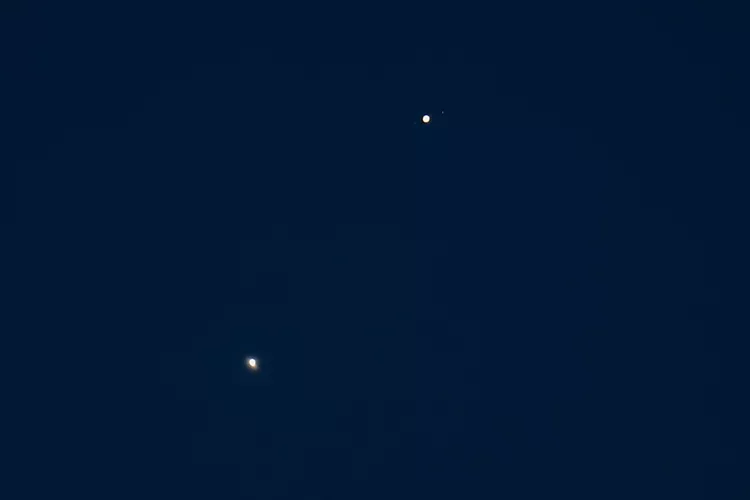Summary of March’s Night Sky
Pining for some planet sightings? March’s night sky has you covered.
This month’s after-dark entertainment showcases our interstellar neighbors, featuring the Venus-Jupiter conjunction, a planet parade, Saturn’s appearance, and a rare sighting of the elusive Mercury.
You can catch these planets with the naked eye; however, a pair of stargazing binoculars or a telescope will greatly enhance your viewing experience. Moreover, utilizing a stargazing app can guide you through the cosmos. March is one of the last chances to catch the northern lights in high-latitude locations such as Iceland and Alaska.
Grab your blankets and binoculars; here’s where to look in the night sky this March.
March 1: Venus-Jupiter Conjunction
The month kicks off with a remarkable event as Venus and Jupiter, two of the brightest visible planets, will appear just half a degree apart (approximately half the width of your thumb). They have been nearing each other throughout February, but on the evening of March 1, they will nearly appear to touch in the west-southwest sky just after sunset, according to Space.com.
March 14: Planet Parade
On March 14, observe not just one, but four planets in the night sky at dusk. According to the Adler Planetarium, Mars, Uranus, Venus, and Jupiter will align vertically in the western sky, near the Taurus and Orion constellations. Look for Mars at the top of the line and Jupiter close to the horizon at the base.
March 20: March Equinox
While not a planet event, the March equinox will officially occur at 5:24 p.m. EDT on March 20, according to the Farmer’s Almanac. This marks the beginning of spring in the northern hemisphere and autumn in the southern hemisphere. The equinox aligns with Punxsutawney Phil’s 2023 prediction for North America, suggesting a prolonged winter that stretches until mid-March.
March 24: Saturn Appears
March continues to deliver stellar sights as Saturn captivates stargazers in the early morning hours, roughly 40 minutes before sunrise, in the east-southeast sky. The ringed planet will be visible near the horizon; therefore, find an open area with clear views towards the southeast, according to the Adler Planetarium.
March 27: See Mercury near Jupiter
Mercury, often regarded as the elusive planet due to its closeness to the sun, will be easier to spot at the end of March. On March 27, Mercury will appear close to Jupiter in the night sky, showing as a bright star near the western horizon following sunset, as reported by Space.com. You can continue admiring this elusive planet from late March through April.
March 28: The moon meets Mars
The month concludes with another fantastic celestial display: the moon will meet Mars. According to Space Tourism Guide, the duo will appear just two degrees apart in the morning sky, and the first-quarter moon will enhance the visibility of the red planet’s copper hue.




